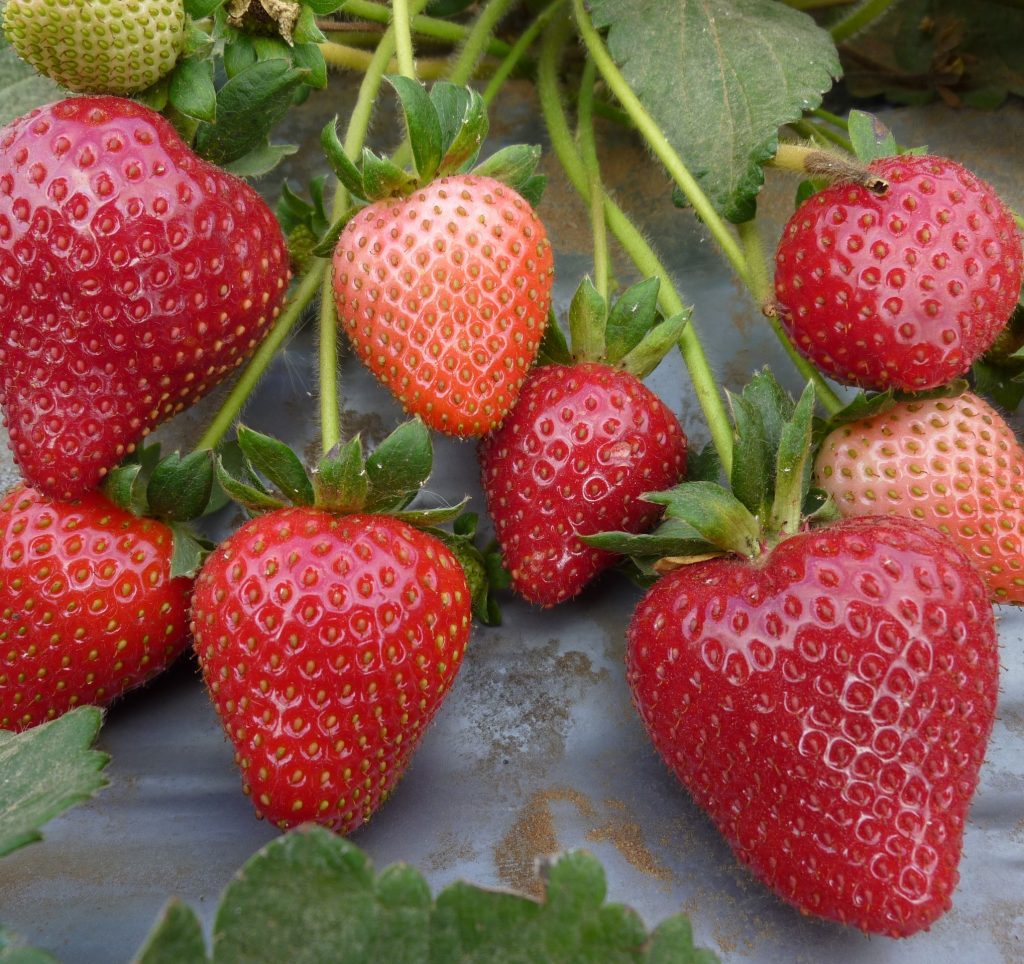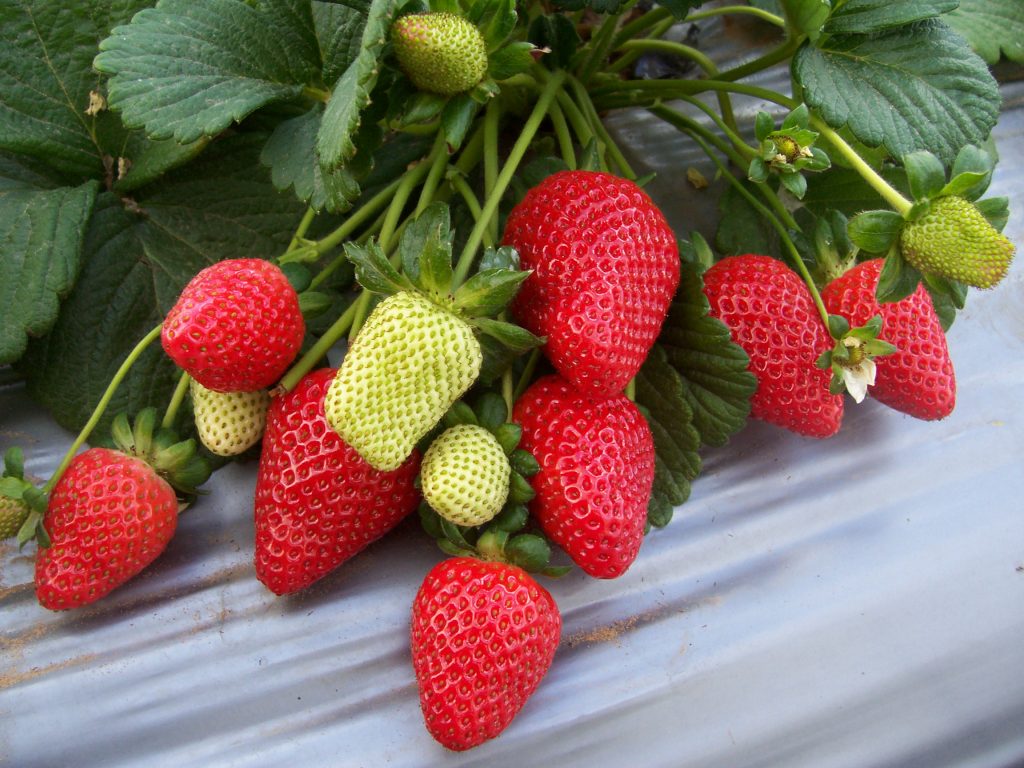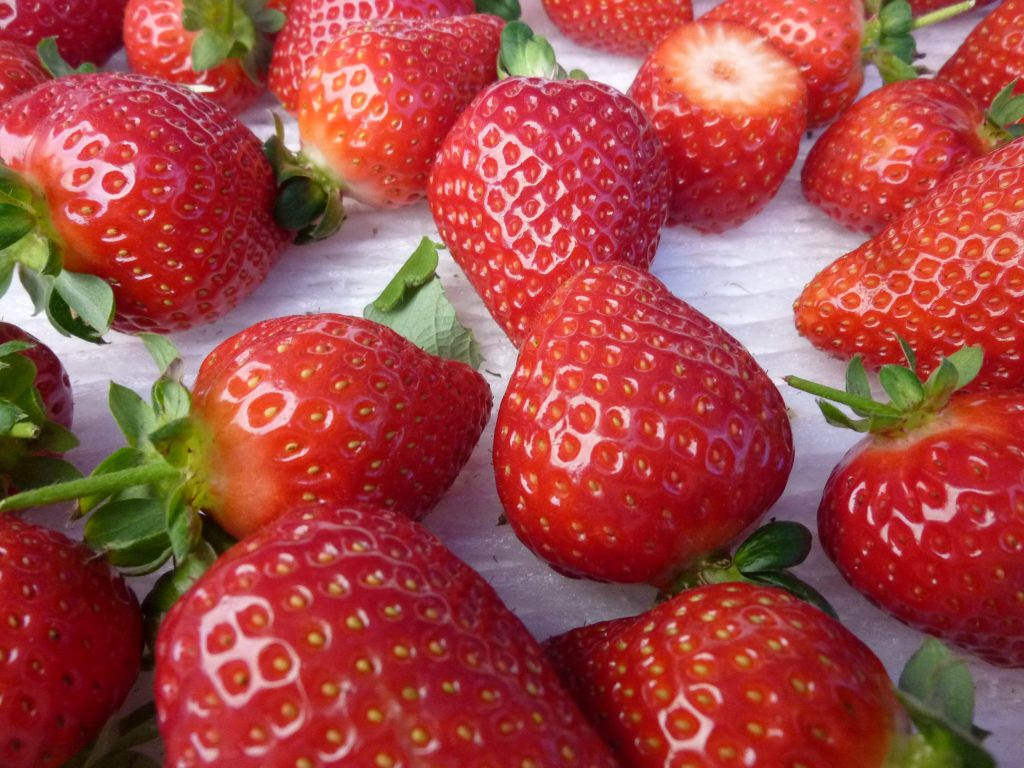The strawberry is a part of the Rosaceae family which also includes apples, peaches, pears and quinces. Strawberries, unlike the common belief, have no relation to mulberries. However strawberries were known to the ancient Greeks and they were first mentioned by the Romans both for curing and ornamental purposes.
Strawberries were first domesticated in the 13th century. In the 17th century, American strawberry varieties were brought to Europe and were crossbred with local European species, creating strawberry fruit as we know it today. The strawberry varieties are vastly different genetically, which allows the plant to easily adapt to changes in the growing-environment. Thanks to the diverse genetic profile, the strawberry can be successfully grown anywhere from Alaska to California, as well as in Australia, Africa and many additional locations throughout the world. However strawberries are mostly grown in the northern hemisphere, in countries with tempered, Mediterranean climates and there are no fundamental limitations from widening the growing area into the southern hemisphere as well.
From a botanical point of view, the strawberry is a fictitious fruit – the eaten part is actually the flower’s receptacle rather than the ovary. The real fruit is actually the little nuts imbedded in the flesh of the strawberry.
Until the 1960s’, strawberry-growing in Israel was done in open fields and ready for picking by March. Changes made in growing methods, such as installing plastic tunnels and indoor growing as well as the employment of new Californian species, allowed yields to peak as early as January. In the late 1970s’, new and successful species that were cultivated by the Agricultural Research Organization of Israel were introduced to the local market. As a result, the peak time of strawberries in Israel was taken even earlier, setting the fruit-picking season to mid-late November.
Strawberry and health – strawberries are good source for carbons, potash and vitamin C. In addition they contain high values of anthocyanins (the red pigments that give strawberries its red color) which, according to current researches, serve as natural antioxidants, reducing age-associated oxidative stress, and improving neuronal and cognitive brain function. Strawberries contain various acids which help in reducing the chance of developing cancerous tumors. Strawberry is a great source for folic acid and vitamin C – both are known to have antioxidant qualities.
Did you know? Compared with an orange, and relatively to its weight, strawberry contains more vitamin C!
Nutritious Value Per 100 Grams of Strawberry:
| Parameter | Value (Gr.) |
| Water | 89-90 |
| General Sugar | 5.4-8.4 |
| Free Acid | 0.6-1.2 |
| Tannin | 0.11-0.15 |
| Pectin | 0.25-0.45 |
| Protein | 0.7-1.0 |
| Minerals | 0.4-0.6 |
| Cellulose | 0.4-0.6 |
| Vitamin C | 60-70 mg |
| Energy | 34-37 Calories |
| PH Value | 3.0-3.3 |




